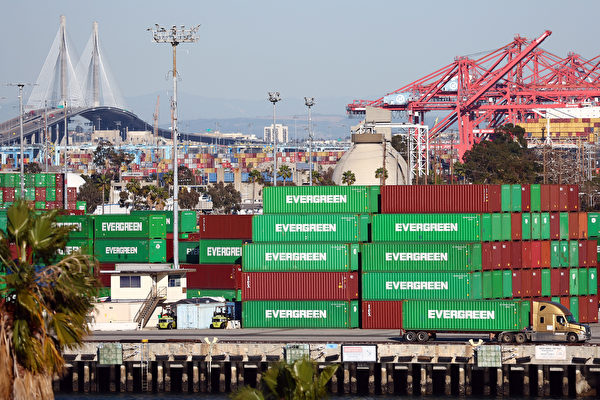As the labor negotiations at the east coast ports in the United States are at risk of not being resolved by the end of September, a new round of strike crisis may loom. Top executives of shipping companies have pointed out that a strike at the ports could immediately affect the entire supply chain. With the holiday shopping season approaching, retailers and manufacturers are redirecting goods to west coast ports to mitigate risks.
Port logistics play a crucial role in the supply chain. During the pandemic, the stacking of containers at ports led to shortages of goods and price hikes in many areas, directly impacting people’s daily lives.
At a media briefing at the Port of LA on September 18th, Gene Seroka, the executive director of the port, stated, “American consumers continue to spend, which helps drive our economy.”
“Some of the goods currently arriving at the port are retailers’ restocked inventory, with quantities exceeding what is needed for the year-end holidays. Combined with the steady delivery of manufacturing parts, we should see an increase in cargo volume in the short term,” he said.
To ensure the smooth delivery of a large volume of goods to businesses, the normal operation of ports is essential. However, this raises a practical issue: there may be an imminent strike at the east coast ports.
The International Longshoremen’s Association (ILA), representing 36 ports and approximately 45,000 workers, has vowed that if a new round of negotiations with the United States Maritime Alliance (USMX) cannot be reached before the labor contract expires on September 30, it will trigger the first major strike by ILA since 1977, halting all work at the ports.
George Goldman, the Chief Executive Officer of CMA CGM in North America, confirmed at the Wednesday briefing that if port workers in the U.S. east coast and Gulf of Mexico ports go on strike from October 1, it will immediately impact the normal flow of goods in the United States.
“Even a day of strike is severe,” he said. “Our supply chain is in a fluid state, and once a strike occurs, things start to deteriorate. Therefore, we do not want any strike events on either coast.”
Sea-Intelligence, a Danish logistics data analysis company, pointed out that a one-day strike would require six days to clear the backlog of goods, even with ample manpower at ports, it would still take 4-5 days. Analysts warned that if port workers go on strike for a week starting from early October, it would not be until mid-November that the ports can clear the backlog of goods; if the strike lasts two weeks, the ports will not return to normal operation until 2025.
Ports shrouded in the shadow of potential strikes handle large quantities of goods daily. To reduce the risks of goods being stuck at ports, retailers and manufacturers have shifted some of their cargo to west coast ports.
The Port of Los Angeles, the busiest port on the U.S. West Coast, has already seen this trend change several months ago. In August, the port processed 960,597 twenty-foot equivalent units (TEU), a 16% increase from the same period last year, making it one of the busiest months in the port’s history.
“We expect to process over 900,000 containers again in September, proving that the port is capable of handling these goods,” said Executive Director Seroka, adding that with enhanced flow in the overall process, the port can handle around 1.2 million containers each month.
Rising tariffs and labor negotiations have also brought the adjacent Port of Long Beach into the peak shipping season: in August, the port processed 913,873 TEUs, a 33.9% increase from the same period last year, marking the strongest month of operation in its 113-year history.
Goldman believes, “We see strong GDP data, and just today, mortgage rates have dropped. Therefore, aside from potential (or not) labor issues, we believe the fourth quarter will perform well.”

